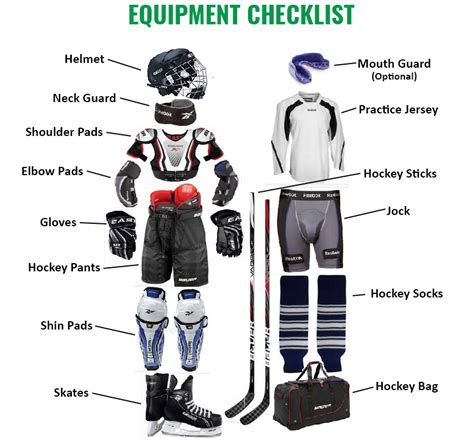Playing hockey is a physically demanding sport that requires proper protective gear. However, choosing what to wear under your hockey gear is equally important for comfort, performance, and safety. In this comprehensive guide, we’ll explore the various undergarments and accessories you need to optimize your hockey experience.

Base Layer: The Foundation of Comfort
The base layer is the foundation of your hockey wardrobe, providing insulation, moisture wicking, and protection from chafing. Here are the key considerations for choosing a base layer:
Fabric Type
Synthetic Materials: These fabrics, such as polyester and nylon, are lightweight, moisture-wicking, and quick-drying. They’re ideal for regulating body temperature during intense hockey games.
Merino Wool: Natural wool from Merino sheep is a warm, breathable, and odor-resistant fabric. It’s a great option for colder climates and players who tend to sweat a lot.
Fit
Compression: Compression base layers provide a snug fit that improves circulation and reduces muscle fatigue. They’re typically made from synthetic materials.
Loose Fit: Loose-fitting base layers allow for more breathability and comfort. They’re often made from natural fabrics like Merino wool.
Moisture Management: Keeping You Dry
Hockey is a sweaty sport, so proper moisture management is crucial. Look for base layers and accessories that effectively wick moisture away from your skin, keeping you dry and comfortable.
Undergarments with Wicking Properties
Moisture-Wicking Shirts: Specifically designed shirts with moisture-wicking technology help draw sweat away from your body and evaporate it quickly.
Moisture-Wicking Underwear: Moisture-wicking underwear prevents chafing and keeps your private areas dry and comfortable.
Accessories for Moisture Management
Sweatbands: Headbands and wristbands absorb sweat from your forehead and wrists, preventing it from dripping into your eyes or gloves.
Sweat-Proof Underwear: Made from innovative materials like CoolMax, sweat-proof underwear absorbs moisture and disperses it away from your skin.
Protection: Essential for Safety
While hockey gear provides external protection, wearing the right undergarments can enhance your safety and reduce the risk of injuries.
Chest Protectors
Ribbed Shirts: Ribbed undershirts add an extra layer of padding around your chest, providing protection from impacts on your ribs and sternum.
Gel Cups: Gel cups are thin, flexible inserts that fit inside your base layer to provide localized protection for your chest.
Padding for Sensitive Areas
Groin Cups: Groin cups are essential for protecting against direct impacts to your groin area. Choose cups made from durable materials like polycarbonate or Kevlar.
Hip Pads: Hip pads are worn under your pants to provide additional protection for your hip bones and thighs.
Comfort and Performance
In addition to protection and moisture management, choosing undergarments that enhance your comfort and performance is vital.
Mobility and Flexibility
Stretch Fabrics: Base layers made from stretch fabrics allow for unrestricted movement and flexibility on the ice.
Fitted Undergarments: Undergarments that fit well and don’t bunch up or restrict your range of motion are important for optimal performance.
Temperature Regulation
Layering System: Use multiple layers of undergarments to adjust your insulation and warmth level based on the weather conditions.
Ventilation: Base layers with ventilation panels or mesh areas promote airflow and keep you cool during intense gameplay.
Accessories: Enhancing Your Game
Beyond the essential undergarments, consider these accessories to further enhance your hockey experience.
Socks
Compression Socks: Compression socks improve circulation, reduce muscle fatigue, and provide additional ankle support.
Hockey-Specific Socks: Hockey-specific socks are designed with moisture-wicking properties and padded areas to cushion high-impact areas of your feet.
Base Layer Neck Gaiters
Moisture-Wicking Gaiters: Neck gaiters made from moisture-wicking fabrics protect your neck from sweat and cold weather.
Thermal Gaiters: Thermal gaiters provide additional warmth and insulation for your neck during cold games.
Hand Protection
Liner Gloves: Liner gloves are worn under your hockey gloves to provide extra warmth and moisture protection.
Sweat-Absorbing Wristbands: Wristbands help absorb sweat from your hands and prevent it from entering your gloves.
Conclusion
Choosing the right undergarments and accessories to wear under your hockey gear is crucial for comfort, performance, and safety. By following the guidelines outlined in this comprehensive guide, you can create a personalized under-garment system that meets your specific needs and allows you to play at your best. Remember, the right undergear is just as important as your hockey gear itself, so invest in quality items that will enhance your on-ice experience.
Frequently Asked Questions
What type of base layer fabric is best for hockey?
Synthetic materials like polyester or nylon are ideal for moisture wicking and quick-drying.
Do I need to wear groin protection under my base layer?
Yes, groin cups are essential for protecting against direct impacts to your groin area.
How many layers of undergarments should I wear?
The number of layers depends on the weather conditions. Use a layering system to adjust your insulation and warmth level.
Are compression socks beneficial for hockey?
Yes, compression socks improve circulation, reduce muscle fatigue, and provide additional ankle support.
What is the importance of wearing the right socks in hockey?
Hockey-specific socks are designed with moisture-wicking properties and padded areas to protect your feet from high-impact forces.
Can I wear regular underwear under hockey gear?
While regular underwear may provide some protection, moisture-wicking and sweat-proof underwear is highly recommended to keep your private areas dry and comfortable.
How often should I wash my base layer garments?
Wash your base layer garments after each use to prevent odor and bacteria buildup.
Are there any special care instructions for hockey base layers?
Follow the manufacturer’s care instructions, but generally, avoid using fabric softeners and tumble drying on high heat to preserve the moisture-wicking properties of the fabrics.
